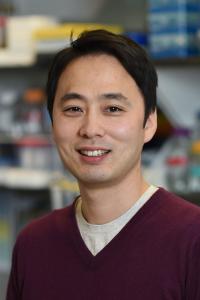New Dual-Drug Strategy Outmaneuvers Resistant Breast Cancer Tumors
Researchers at Columbia University Irving Medical Center (CUIMC) have uncovered a promising strategy for targeting the proteins that drive certain treatment-resistant breast cancers. Using cutting-edge single-cell analyses and translational models, the team found that a new combination of two existing drugs can simultaneously block key cancer cell growth pathways and prevent tumors from developing resistance. The approach shows promise for both hormone receptor–positive and triple-negative breast cancers - where current treatments often fall short.
In recent years, the introduction of drugs that inhibit the CDK4/6 protein complex has revolutionized treatment for hormone receptor-positive breast cancer. Unfortunately, they have two serious limitations: First, they only benefit patients whose tumors have hormone receptors, and even those tumors that respond to the therapy can become resistant over time, reducing the effectiveness of therapy.
Hee Won Yang, PhD, assistant professor of pathology and cell biology in the Vagelos College of Physicians and Surgeons (VP&S) at CUIMC and a member of the Herbert Irving Comprehensive Cancer Center, has long focused on why breast cancers stop responding to CDK4/6 inhibitors. Previously, his lab discovered that tumors escape from CDK4/6 inhibition through breaking down a protein called Rb, which normally acts as a brake on cell growth.
“That process offers an alternative way to promote cell growth under CDK4/6 inhibition, but it’s not the whole story,” says Yang, senior author of the new study. “To fully escape CDK4/6 therapy, the cancer cells also have to increase the activity of other genes — and that requires RNA transcription.”
Closing the cancer escape-hatch
In their new paper in the Journal of Clinical Investigation, Yang and colleagues (first authors include Sungsoo Kim and Eugene Son) set out to exploit the weakness they had uncovered — cancer’s reliance on increased gene activity to evade CDK4/6 therapy. Their focus was on CDK7, a protein with a central role in regulating gene expression.
Other groups had suggested that CDK7 inhibitors might have a “dual role,” affecting both gene transcription and the activity of other cell-cycle CDK proteins, but the details remained unclear. Using cutting-edge live-cell imaging, Yang’s lab was able to directly track CDK activity in real time — something earlier analyses couldn’t capture.
What they saw is that CDK7 inhibition primarily disrupts RNA transcription, which they already knew was key to CDK4/6 therapy resistance, but does not broadly shut down CDK activity. “That gave us a much clearer picture of how CDK7 actually functions in cancer cells,” Yang explains, “and could explain why earlier clinical trials of a CDK7 inhibitor had lackluster results. Given the idea of a dual role, people have tried CDK7 inhibitors as a single therapy,” Yang says. “But, the doses needed for it to work were too toxic, and the effect on tumor growth was not strong enough.”
Testing the dual attack
Building on their single-cell findings, Yang and his team hypothesized that combining CDK4/6 and CDK7 inhibitors could be more effective than either drug alone. To test this, they used patient-derived organoids and evaluated the combination in animal models of both hormone receptor-positive and triple-negative breast cancer.
In hormone receptor-positive breast cancer tumors, Yang explains, “CDK7 inhibition prevents the development of resistance to CDK4/6 inhibitors,” demonstrating that the two drugs can work together as a coordinated defense system. The dual therapy also produced encouraging results in triple-negative cancers, a type that typically does not respond to CDK4/6 inhibitors alone.
The studies also offered an unexpected bonus: the combination therapy didn’t just block cancer growth — it also stimulated an immune response to attack the tumors.

CD8+ cytotoxic T cells (green) infiltrate breast cancer tumors in animal models, showing that the dual-drug therapy stimulates the body’s immune response against the cancer.
“We didn’t expect that,” says Yang. “Mechanistically, the two-drug therapy reprograms the tumor microenvironment by boosting immune-modulatory signaling in tumor cells.” This change makes the tumors more visible to the immune system, encouraging immune cells to infiltrate and attack the cancer. The finding suggests that the combination therapy could have two layers of defense: directly stopping cancer cells from growing and indirectly enlisting the body’s immune system to help fight the tumor.
New hope for triple-negative breast cancer patients
Importantly, the combination therapy showed these effects at modest doses, suggesting that it could be tolerable for patients. Yang now plans to collaborate with colleagues at Columbia and beyond to begin planning early clinical trials.
Still, he stresses that this approach won’t work for every patient. “Patient selection and dosing are crucial,” Yang says. “Our strategy only works when the Rb pathway is intact, and resistance arises from increased gene transcription.”
Because the dual-drug therapy also appears to activate the immune system, Yang notes it could potentially be paired with immune checkpoint inhibitors. That combination may be particularly valuable for triple-negative breast cancer, a type that has historically lacked effective targeted therapies.
References
Additional Information
This paper, "Dual targeting CDK4/6 and CDK7 augments tumor response and anti-tumor immunity in breast cancer models," was published on August 12, 2025 in The Journal of Clinical Investigation.
Funding
The graphical abstract were created with BioRender (biorender.com). We thank Alana Welm for providing PDxO, Kevin Gardner for MDA-MB-231 and HCC38 cells, and Nicole Haynes for AT3OVA cells. This research was supported by the Melanoma Research Foundation (M.K. and H.Y.), a Research Scholar Grant from the American Cancer Society (M.K., RSG-22-167-01-MM; H.Y., RSG-22-101-01-CDP), a V Scholar Award (H.Y., V2023-017), and NIH grants R01-GM145884 (H.Y.), R37-CA266270 (M.K.), and R21-CA293766 (M.K.). Additionally, this study utilized resources from the Herbert Irving Comprehensive Cancer Center Flow Cytometry Shared Resources (P30-CA013696).
